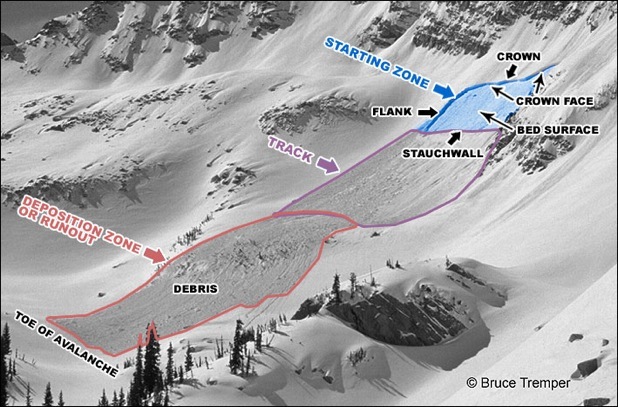Slab Avalanches
Since snow is accumulated over time, the snowpack forms as layers of snow with varying properties of density, compressive and tensile strength, cohesion and snow crystal geometry.
(top)
http://www.avalanche.org/~uac/encyclopedia/
(middle)
http://www.avalanche.org/~uac/encyclopedia/

Properties of a Slab Avalanche: A slab of snow fractures at what is called the crown, then slides down the mountain. In a common slab avalanche the displaced snow will travel in large & dense blocks, much like ice boulders rolling down a mountain. Out of all three different types of avalanches, slab avalanches are most likely to be triggered by humans, wether high marking, skiing or climbing.

In the most basic sense avalanches can be viewed in terms of conservation of energy. You have the potential energy of a large mass of snow, which under the right conditions can transform itself into kinetic energy.







When the horizontal component of the weight of the slab overcomes the shear & tensile strength of the snowpack it will break loose and slide down the mountain. One of the major areas of research into avalanche modeling and prediction has been to better understand and quantify the many variables that must be taken into account in determining just how and under what conditions a snowpack will become unstable and slide.